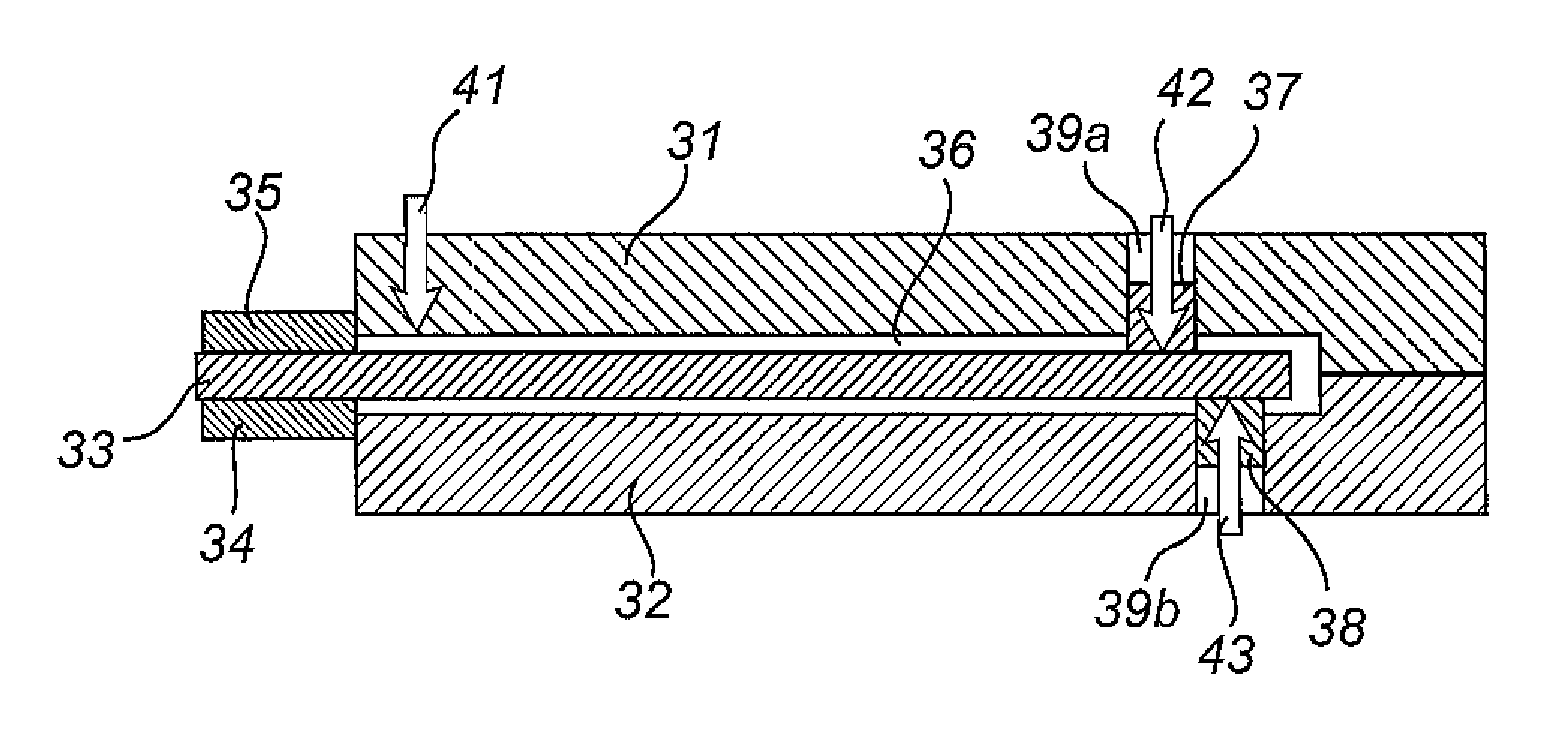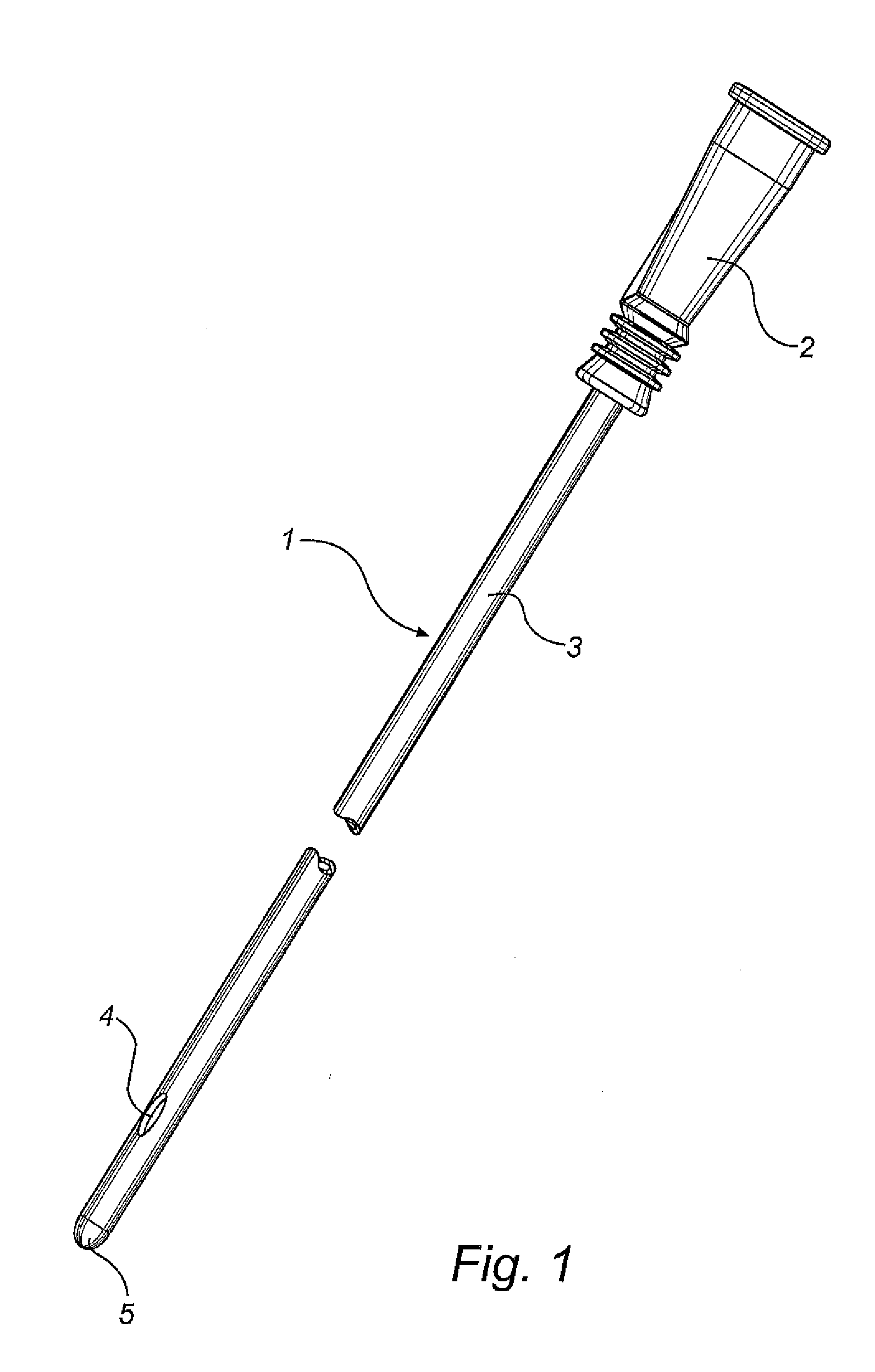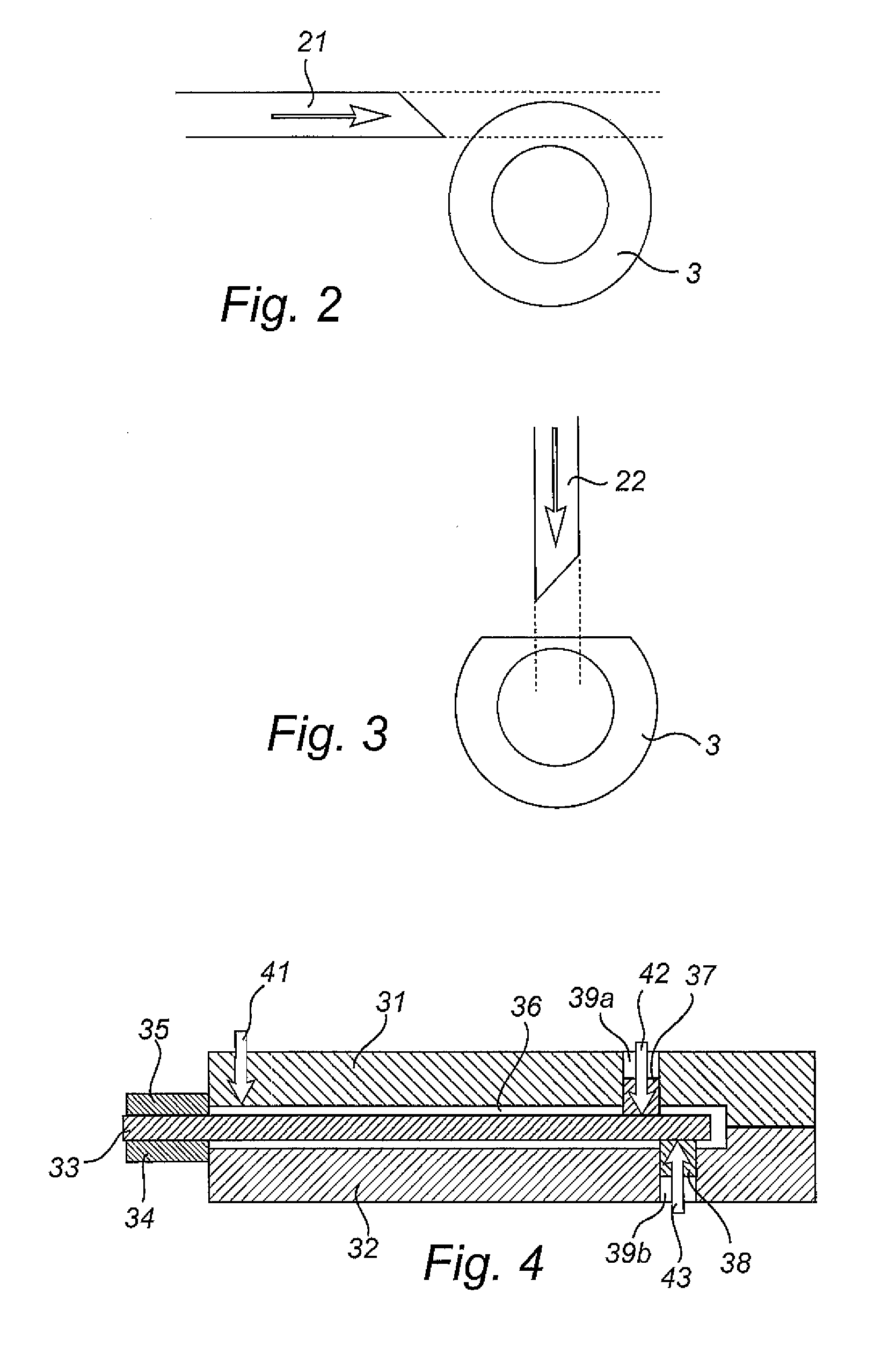Medical device having a tubular substrate and at least partly surface treated access openings
a tubular substrate and access opening technology, applied in the field of medical devices, can solve the problems of undesired surface treatment of the inside of the device, difficult access opening provision after surface treatment, and high cost of such medical devices, and achieve the effect of reducing discomfort or trauma to the urethra during insertion
- Summary
- Abstract
- Description
- Claims
- Application Information
AI Technical Summary
Benefits of technology
Problems solved by technology
Method used
Image
Examples
Embodiment Construction
[0041]In the following detailed description preferred embodiments of the invention will be described. However, it is to be understood that features of the different embodiments are exchangeable between the embodiments and may be combined in different ways, unless anything else is specifically indicated. The medical devices may be used for many different purposes, and for insertion into various types of body-cavities. However, the following discussion is in particular concerned with the preferred field of use, urinary catheters, even though the invention is not limited to this particular type of catheters or even this particular type of medical device. It is to be appreciated by those skilled in the art that the inventive concept is not limited to any certain type of devices, but could be used in different types of medical devices.
[0042]A catheter 1 as illustrated in FIG. 1, comprises a flared rearward portion 2 and an elongate shaft or tube 3 projecting forwardly from the rearward p...
PUM
| Property | Measurement | Unit |
|---|---|---|
| thickness | aaaaa | aaaaa |
| surface area | aaaaa | aaaaa |
| polymeric | aaaaa | aaaaa |
Abstract
Description
Claims
Application Information
 Login to View More
Login to View More - R&D
- Intellectual Property
- Life Sciences
- Materials
- Tech Scout
- Unparalleled Data Quality
- Higher Quality Content
- 60% Fewer Hallucinations
Browse by: Latest US Patents, China's latest patents, Technical Efficacy Thesaurus, Application Domain, Technology Topic, Popular Technical Reports.
© 2025 PatSnap. All rights reserved.Legal|Privacy policy|Modern Slavery Act Transparency Statement|Sitemap|About US| Contact US: help@patsnap.com



